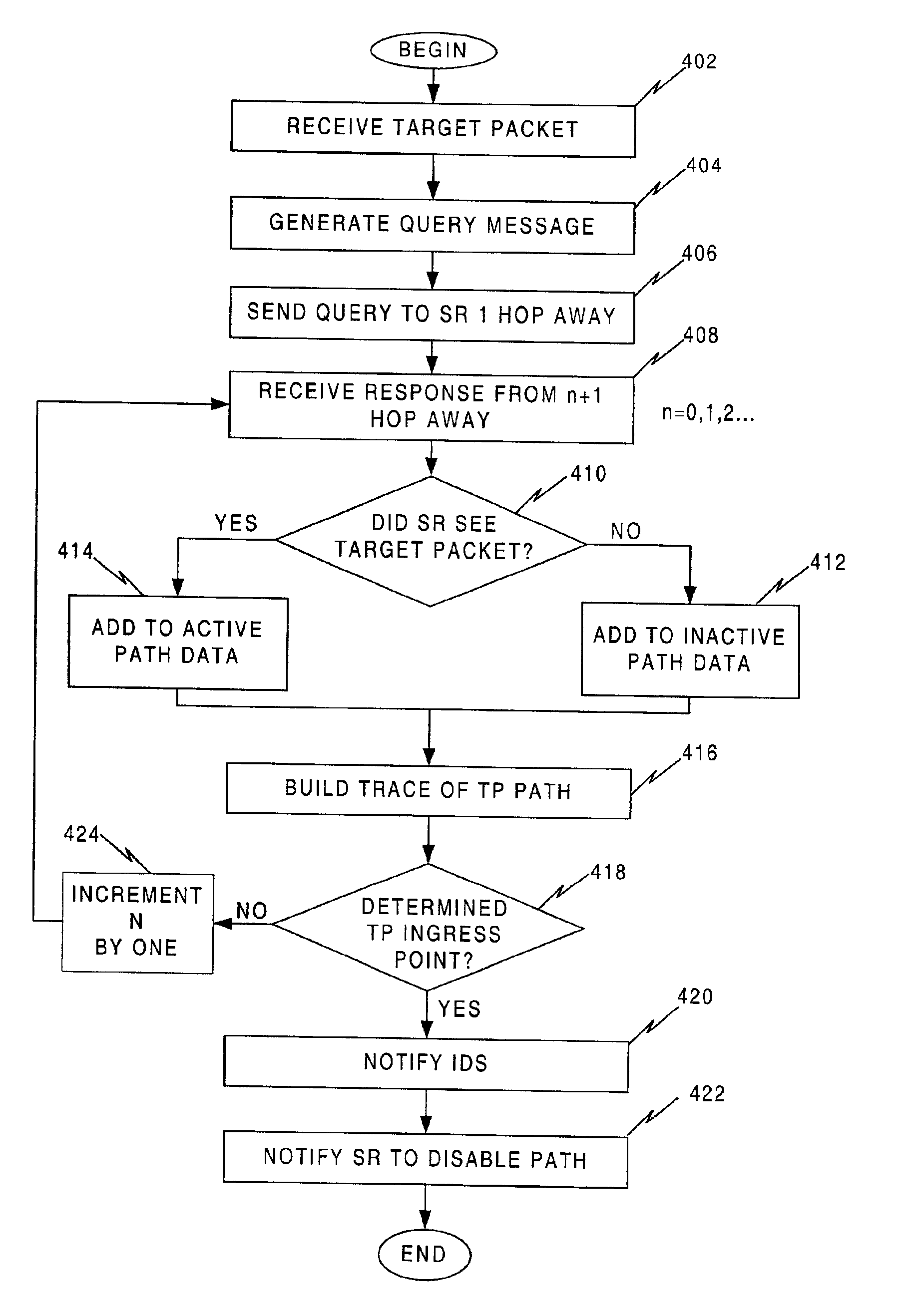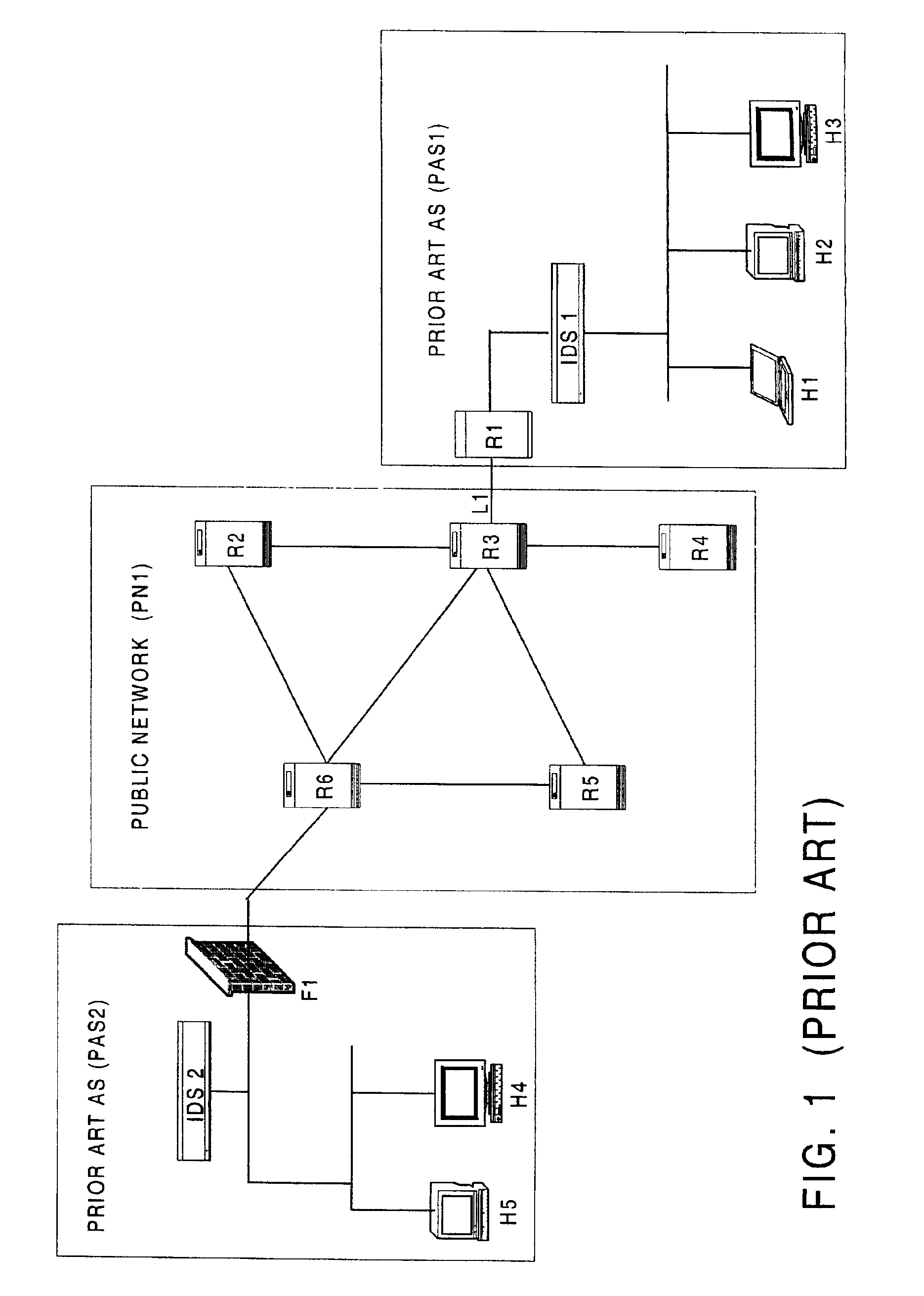Method and apparatus for tracing packets
a packet and packet technology, applied in the field of network security, can solve the problems of increasing the number of vulnerability points from which malicious individuals can launch attacks, increasing the size of the internet, and increasing the threat posed by individuals, so as to facilitate the identification of intrusion locations, improve packet networks, and eliminate problems caused
- Summary
- Abstract
- Description
- Claims
- Application Information
AI Technical Summary
Benefits of technology
Problems solved by technology
Method used
Image
Examples
Embodiment Construction
[0034]FIG. 2
[0035]A preferred embodiment uses a server and one or more specially configured network components, or devices, such as a router, within an autonomous system (AS) to determine the ingress point, or location, for a malicious packet (MP1). FIG. 2 illustrates an embodiment that may be used with an Internet Protocol network. More particularly, FIG. 2 is broken into three general areas enclosed within borders with communication media, such as links, carrying data traffic across the network, connecting the general areas. Links serve as a transmission media for data and signals on the network and may be comprised of wire, optical fiber, radio frequency (RF) transponders, or the like.
[0036]The rightmost portion of FIG. 2 denotes an AS, shown as AS1, enhanced by the addition of a source path isolation server (SS1) and network components, here routers, modified to work as source path isolation routers (SRs), denoted by SR14-17, respectively. Also included within AS1 is a detection...
PUM
 Login to View More
Login to View More Abstract
Description
Claims
Application Information
 Login to View More
Login to View More - R&D
- Intellectual Property
- Life Sciences
- Materials
- Tech Scout
- Unparalleled Data Quality
- Higher Quality Content
- 60% Fewer Hallucinations
Browse by: Latest US Patents, China's latest patents, Technical Efficacy Thesaurus, Application Domain, Technology Topic, Popular Technical Reports.
© 2025 PatSnap. All rights reserved.Legal|Privacy policy|Modern Slavery Act Transparency Statement|Sitemap|About US| Contact US: help@patsnap.com



